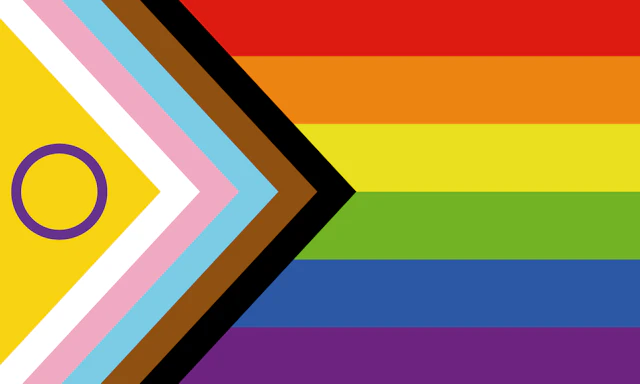
Cookies in use
Understanding the Asexual Community

What Does It Mean to be Asexual?
Asexual, often called “ace” for short, refers to a complete or partial lack of sexual attraction or lack of interest in sexual activity with others. Asexuality exists on a spectrum, and asexual people may experience no, little or conditional sexual attraction.
While the exact number is unknown, numerous sources suggest that there are hundreds of thousands of asexual people in the United States.
To understand the asexual community, it is also important to be familiar with the following definitions:
Allosexual - The opposite of asexual. People who experience sexual attraction are called allosexual.
Gray asexual - Also called graysexual or gray ace, gray asexual refers to a gray area between asexuality and allosexuality. As part of the asexual spectrum, people who are gray ace may rarely experience sexual attraction or only experience sexual attraction under certain circumstances.
Demisexual - Part of the asexual spectrum, a person who is demisexual only experiences sexual attraction when they have a close emotional bond with someone.
What Challenges do Asexual People Face?
According to HRC’s analysis of the 2021 LGBTQ+ Community Survey, 82% of asexual people said their highest priority health concern is addressing mental health challenges, including depression and anxiety. These challenges are rooted in the stigma associated with being asexual and in myths about asexual people. Similar to other LGBTQ+ identities, asexual people are often met with disbelief or dismissal. Asexual people are often told that their identity is just a phase or that they “just haven’t met the right person yet.” Others may even try to pressure asexual people into having sex, mistakenly believing it will change their lack of sexual attraction.
The truth is that asexuality is a valid identity and there are many ways asexual people find fulfillment in their lives outside of experiencing sexual attraction. According to the split-attraction model, sexual attraction and romantic attraction are separate feelings that may or may not align. Some asexual people experience romantic attraction, go on dates and form relationships with people of the same or different genders. They may value companionship and strongly desire a partner or partners. Other asexual people are aromantic and find fulfillment outside of sex and romance. Instead they may prioritize other aspects of life such as friends, family, work, hobbies and personal values and beliefs.
Some asexual people participate in queerplatonic relationships with one or more partners. A queerplatonic relationship describes a relationship that breaks the norms of pure friendship or romance. For example, a queerplatonic relationship may involve a greater degree of commitment or intimacy than a typical friendship, but does not necessarily include sexual or romantic elements.
Media Depictions of Asexual People
Asexual people are also challenged by poor media depictions that portray them as broken or subject them to ridicule. The phrase “sex sells” is one representation of society and the media’s emphasis on sex as the be-all and end-all of personal fulfillment. On TV and in movies, characters who don’t want or don’t have sex are often portrayed as immature, shy or insecure rather than simply disinterested. This can lead many asexual people to feel like there’s something wrong with them or to feel pressured to pursue sex.
Explicit asexual representation in media is uncommon, but when it does occur, asexuality is often cast as a joke, as illegitimate, or as an obstacle for a character to overcome when trying to date an asexual person. This typically involves attempts to “fix” the asexual character so they become interested in sex. Some depictions simply amount to erasure. For example, many people read Sherlock Holmes as seemingly asexual in Arthur Conan Doyle's original books, but many adaptations depict him having sexual relationships.
Supporting Asexual People
If you are or believe you may be asexual, you are valid in your identity. Despite media and social stigma, asexual people can lead fulfilling lives with deep attachments to friends, family, partners and passions. Also know that you are not alone, and that being asexual means you are part of a community of incredible asexual individuals.
If you would like to be an ally to asexual people, affirm asexual identities and acknowledge that sex is not necessary for everyone to find personal fulfillment. Educate yourself and others about the stigma faced by asexual people, and work to dismantle negative assumptions about asexual people in society and in media.
Quick Facts About Asexual People
- Ace Week is held annually during the last full week of October. It is a campaign to raise awareness about asexual people and to celebrate the asexual community.
- Asexuality is not the same as celibacy. While celibacy is a choice to abstain from sexual activity, asexuality is a sexual orientation, or an intrinsic part of an asexual person’s identity.
- According to HRC’s analysis of the 2021 LGBTQ+ Community Survey:
- 71% of asexual people said they live in an LGBTQ+ friendly city or town, compared to 82% of all LGBTQ+ people.
- Asexual people more often fear losing their health insurance than the LGBTQ+ community generally. Nearly one-third (61%) of asexual people have concerns about being able to keep their health insurance, compared to 48% of all LGBTQ+ people who have concerns about keeping their health insurance.
- Three-quarters (75%) of asexual people said their employers are generally supportive of LGBTQ+ people.
Love conquers hate.


